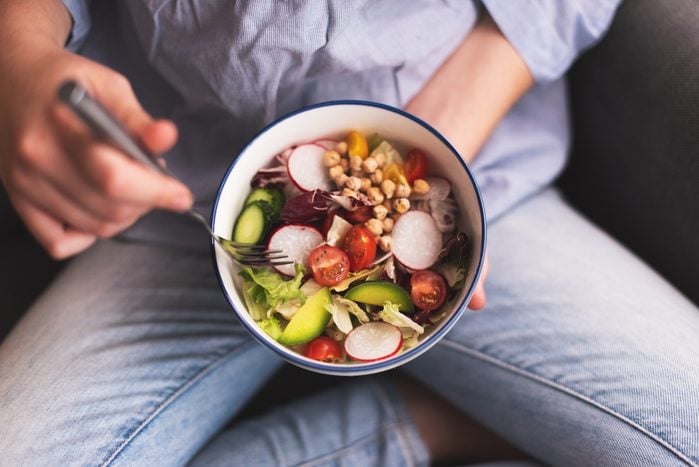How Do You Increase “Good” Cholesterol?
Updated: Nov. 01, 2023

High-density lipoprotein, or HDL, is the "good cholesterol" we're all after. Carrie Madormo, RN, explains how to raise good cholesterol through diet and lifestyle.
Cholesterol gets a bad rap but it’s an important part of your health. This waxy substance is vital for body processes like making new cells and secreting hormones.
However, when too much cholesterol is circulating in the bloodstream, it can bind with other substances and stick to the walls of our blood vessels. This increases the risk for cardiovascular diseases like heart disease and stroke. Here’s how much dietary cholesterol is recommended per day.
Enter HDL, the good cholesterol we’re all after.
What Is HDL?
High-density lipoprotein, also called HDL, is considered the good type of cholesterol because it lowers our risk for cardiovascular disease. It does this by carrying low-density lipoprotein (aka LDL or “bad” cholesterol) away from the arteries and back to the liver, preventing dangerous buildup. The liver then breaks down the LDL cholesterol and helps it pass through the body.
HDL is able to carry about one-fourth to one-third of LDL in the body to the liver. The rest of the LDL cholesterol is left in the blood vessels. So while HDL is incredibly helpful to our heart health, it can’t do all the heavy lifting on its own.
What Are Good HDL Levels?
Achieving the right HDL level in the body is an individual process, and your doctor can give you a specific lab value based on your health. In general, the National Heart, Lung and Blood Institute recommends that adults over age 20 aim for a total cholesterol blood value of 125 to 200 mg/dL. For HDL, women should aim for 50 mg/dL or higher, and men need 40 mg/dL or higher.
Foods That Help Raise Good Cholesterol
It’s possible to raise good cholesterol levels by eating HDL-boosting foods. The Mediterranean diet is associated with eating higher levels of HDL. Try these Mediterranean diet dinners to get started.
Opt for healthy oils and fats to boost your good cholesterol. A good rule of thumb is to stick with liquid cooking fats instead of solid ones. This means that olive oil is a healthier choice than butter, as it is liquid at room temperature. Fats that are solid at room temperature like butter and lard are high in saturated fats and tend to raise LDL cholesterol.
When it comes to protein, reach for lean chicken breast over red meat to keep your saturated fat intake down.
HDL-Boosting Foods to Add to Your Diet
- Olive oil
- Avocado
- Prunes
- Apples
- Beans
- Nuts
- Whole grains
- Flax
- Chia seeds
- Fatty fish
Lifestyle Changes That Help Raise Good Cholesterol
In addition to eating a low-cholesterol diet, other parts of our lifestyle greatly influence cholesterol levels too. Some lifestyle changes that could make a big difference include:
- Being physically active: A sedentary lifestyle lowers your HDL level. Try fitting in daily activity with a walk, workout video or playing with your kids or pets.
- Quitting smoking: Smoking and vaping both lower the amount of HDL cholesterol in your bloodstream. If you’re ready to quit, talk with your doctor about resources to help you be successful.
- Maintaining a healthy weight: Being overweight or obese can raise your LDL cholesterol and lower your HDL cholesterol. Even a small amount of weight loss can boost your HDL levels.
- Managing blood sugar: If you have diabetes, managing your blood sugar levels will help your body boost its HDL. Stick to your diabetes health plan and talk with your doctor if it needs to be adjusted.
- Having healthy blood pressure: Having high blood pressure has been linked with lower levels of HDL. Work with your doctor if you need help lowering your blood pressure.
